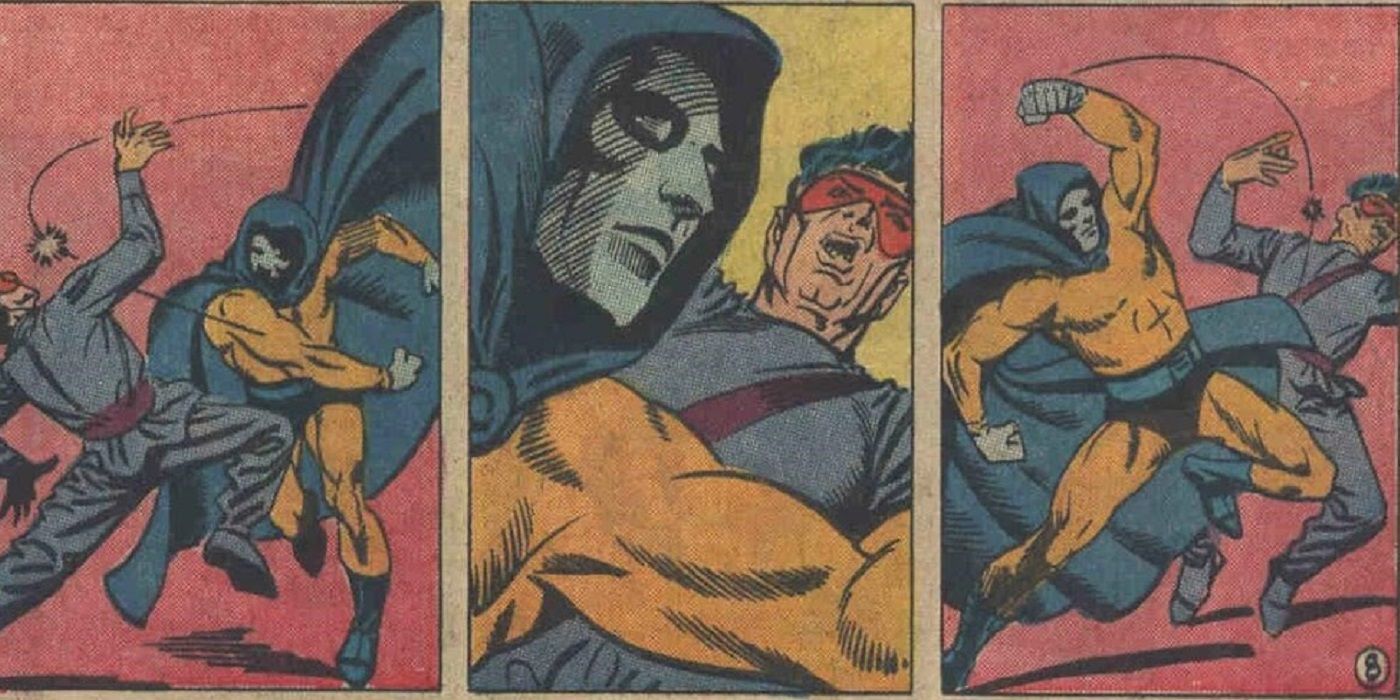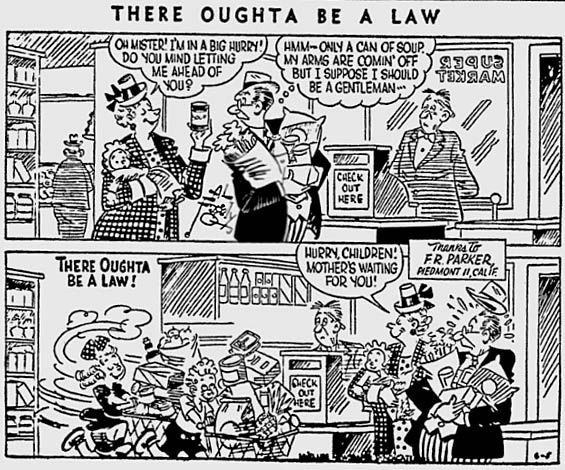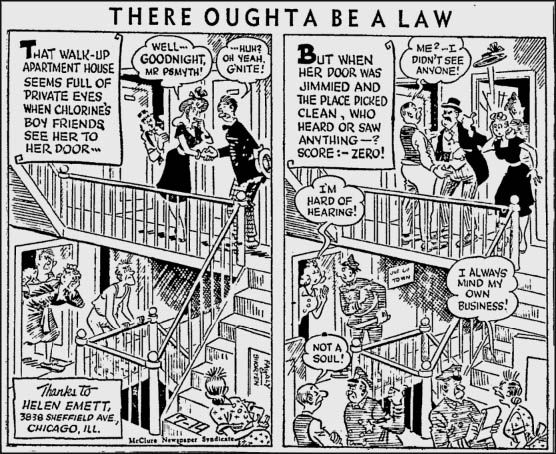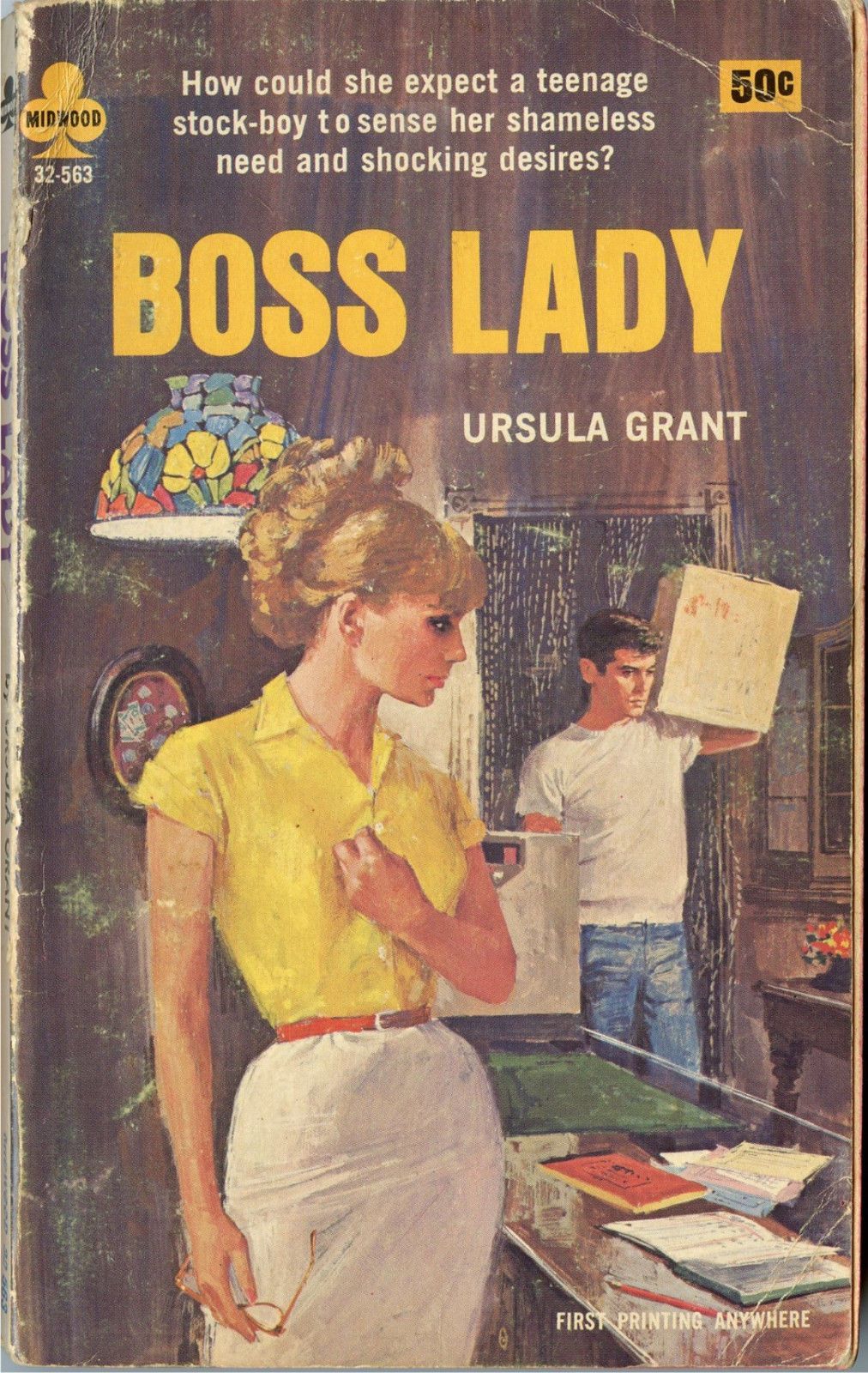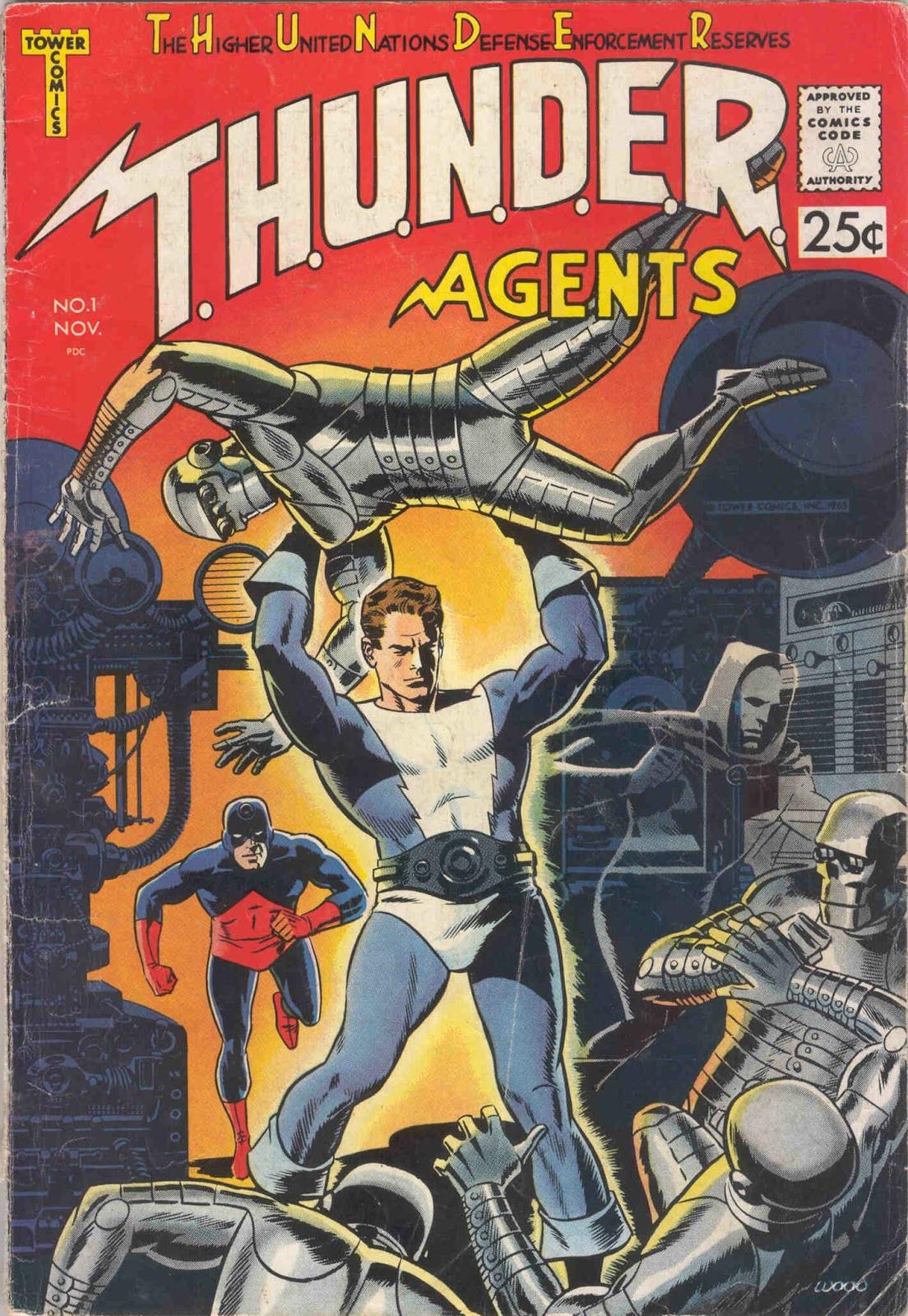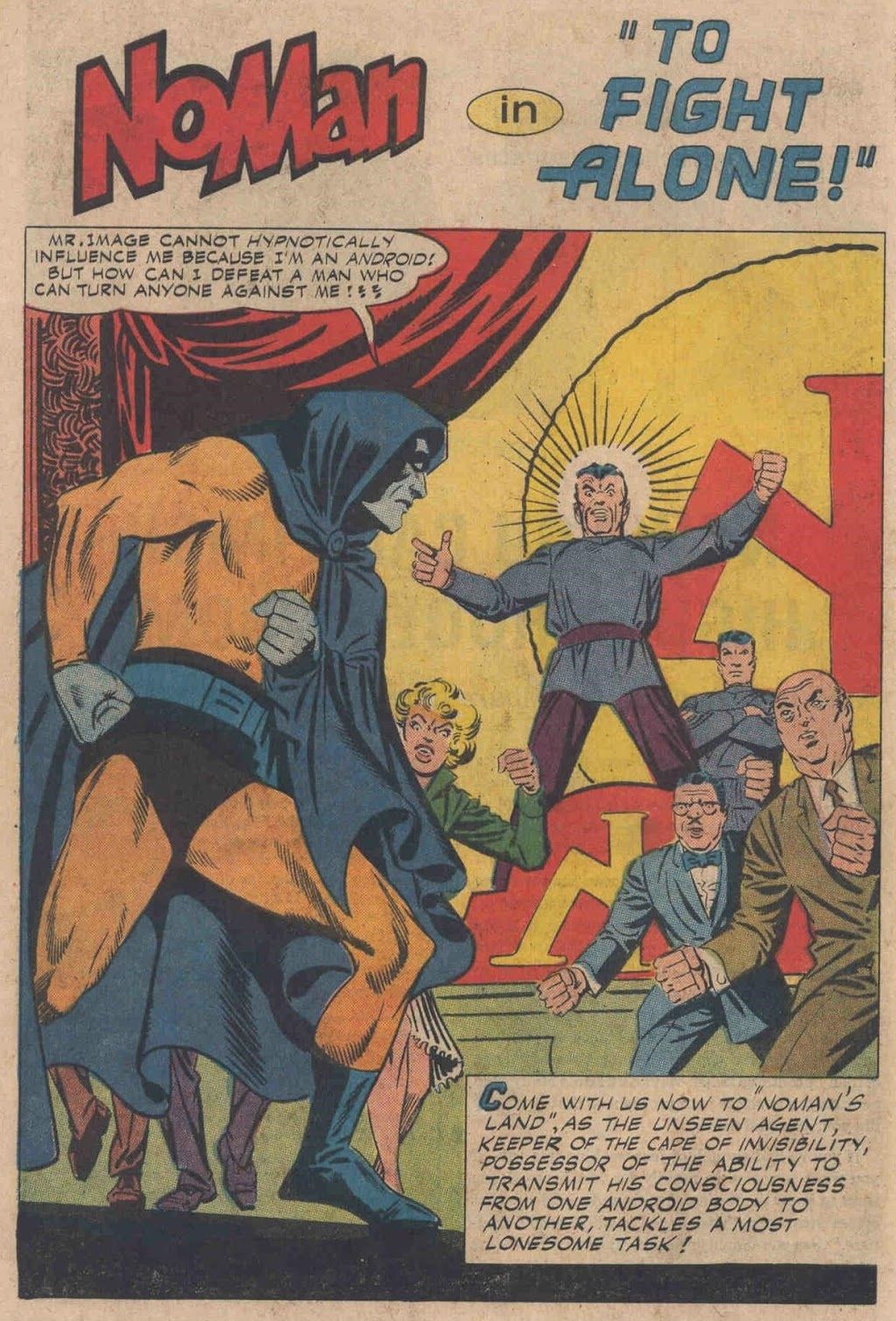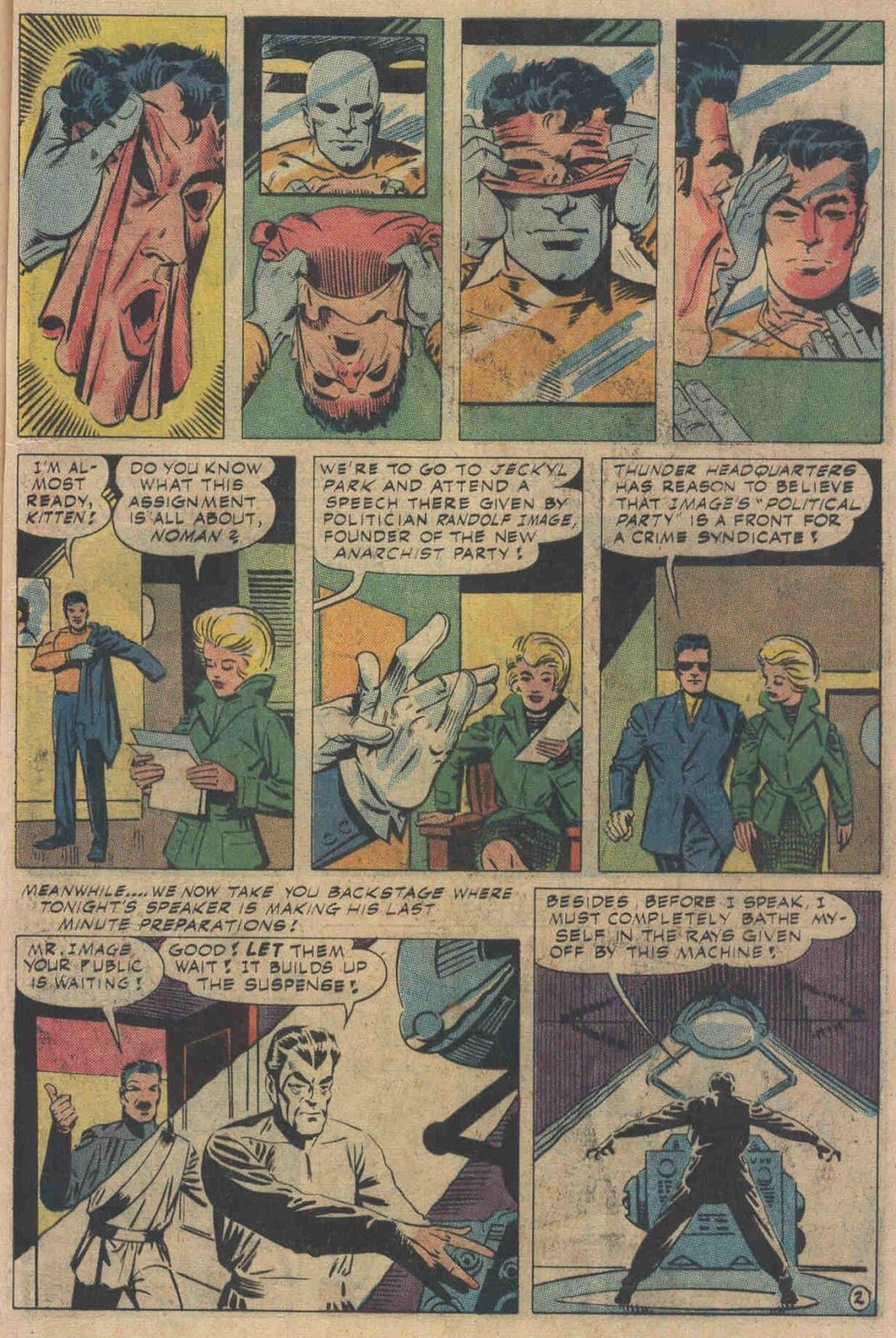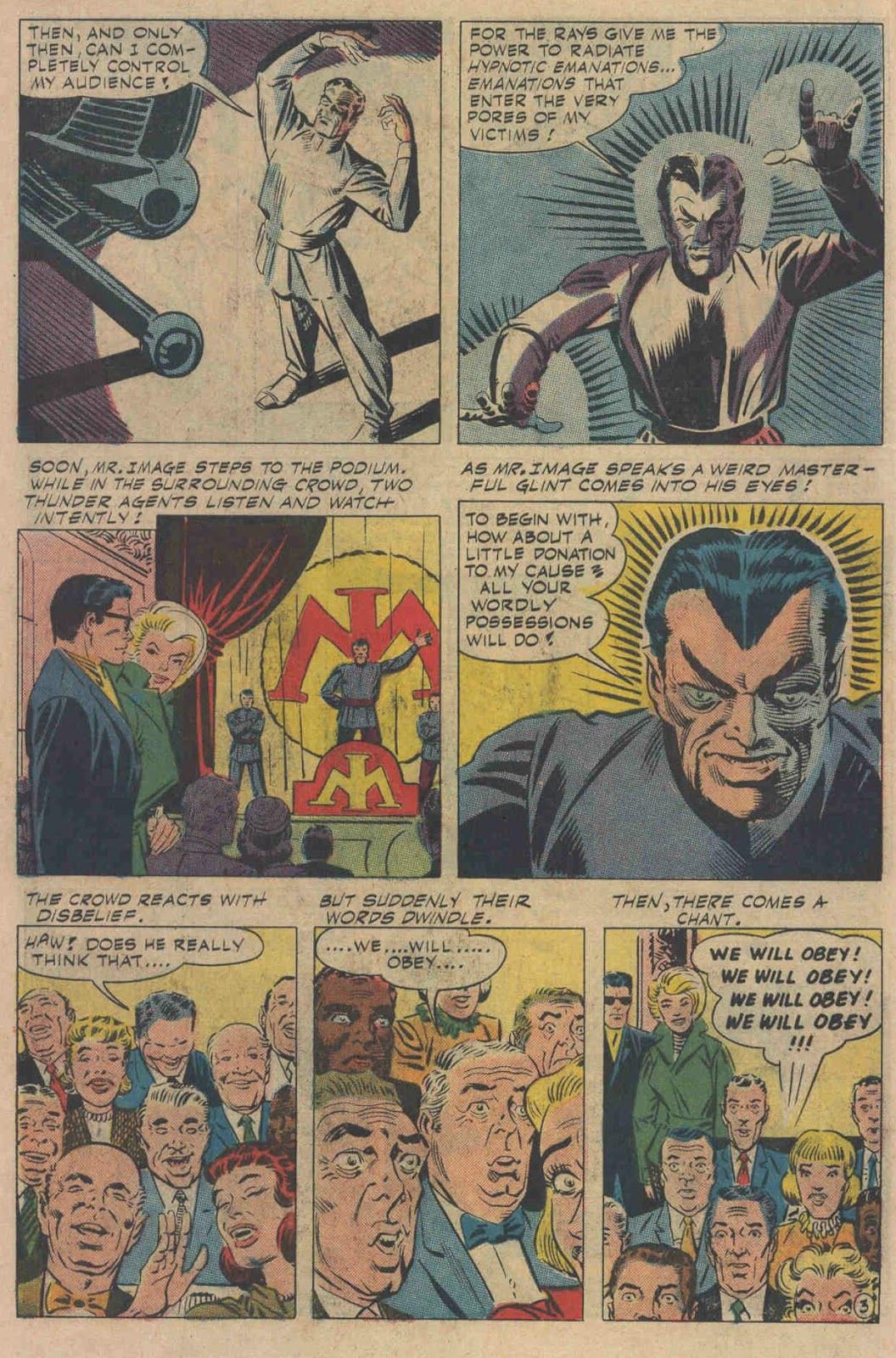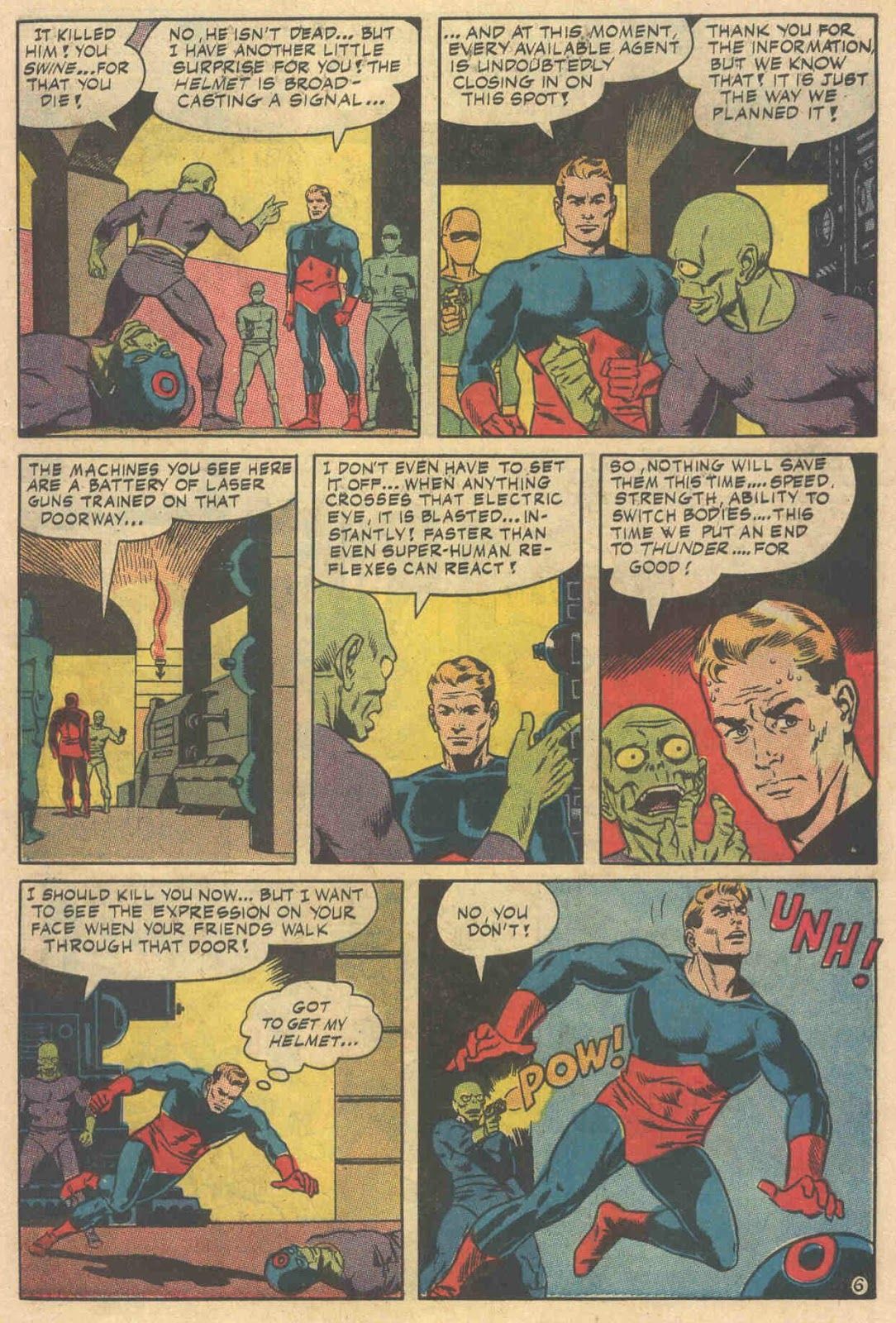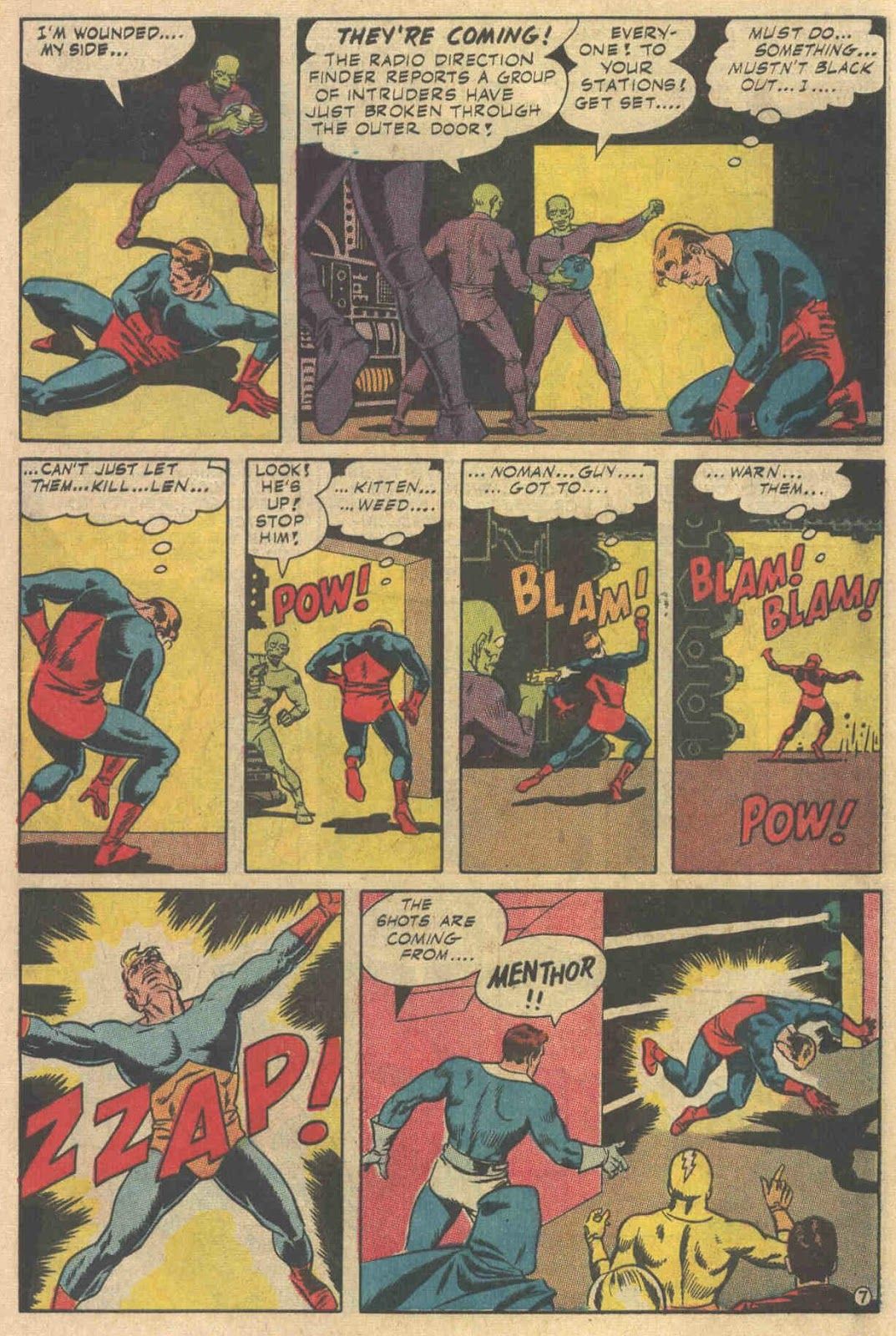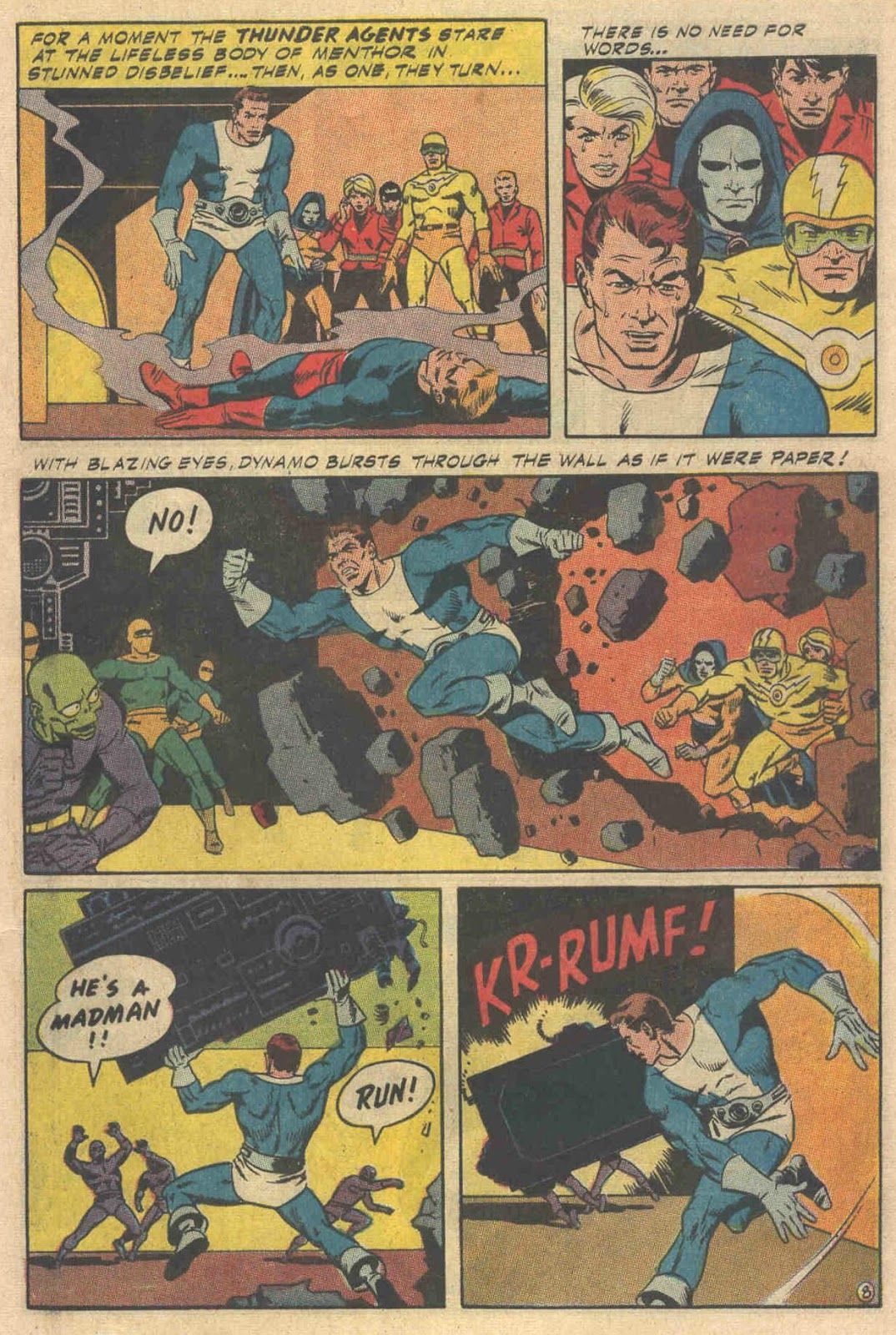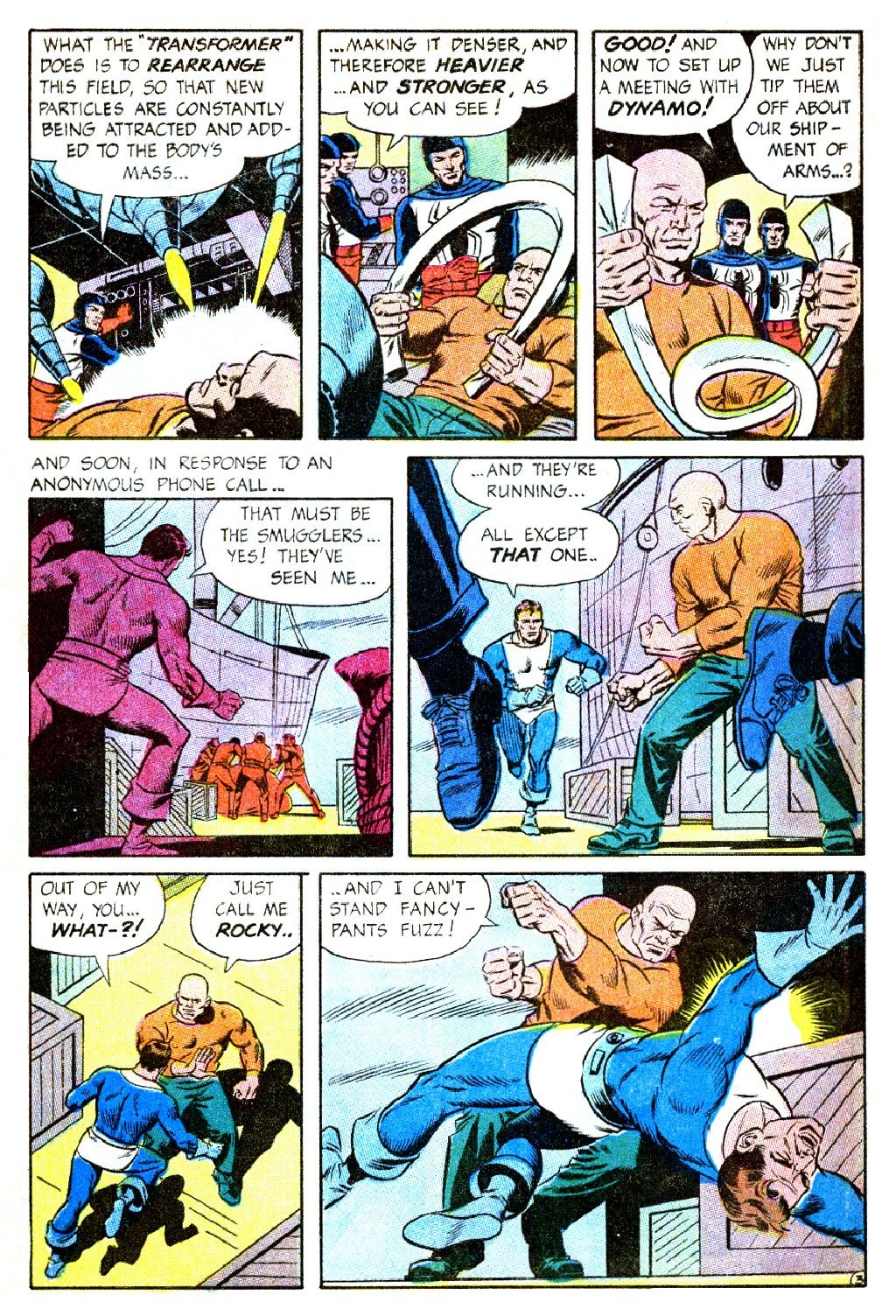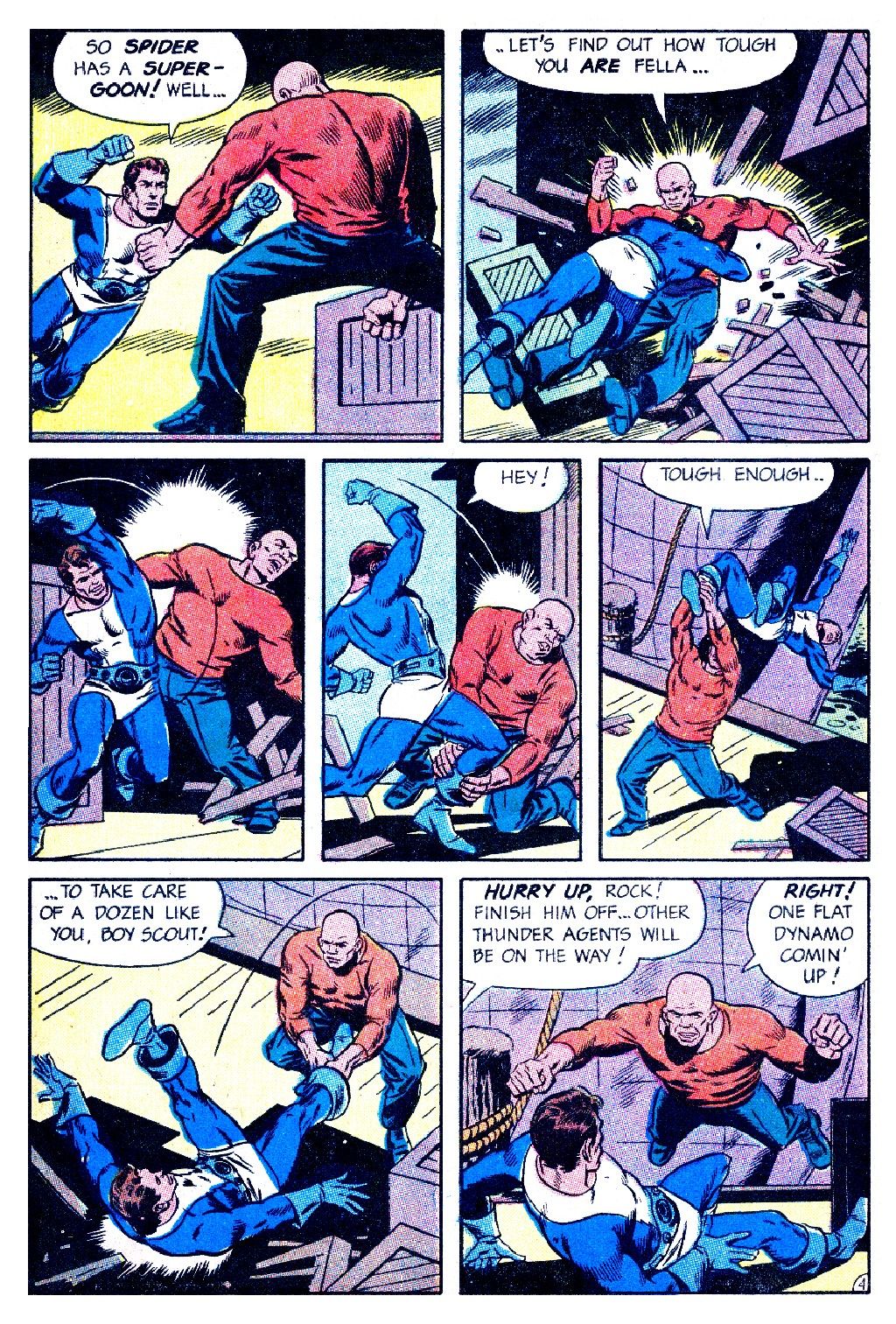It is important to note that it was really only for a brief period of time around 1963 that Steve Ditko ever came close to putting all of his proverbial eggs into one basket. Despite being the artist for one of Marvel Comics' two biggest comic book series, Ditko tried to not let his relationships at other comic book companies go away. In particular, he was doing sporadic work at Charlton Comics even when he was doing many comic book features for Marvel in the late 1950s and early 1960s. When he briefly had to adjust to Amazing Spider-Man becoming a monthly ongoing series, Ditko backed off on his Charlton work for the first time, but even before he left Marvel in 1966, he had already begun to do more work for Charlton. Therefore, when he left Marvel, he was able to transition well to Charlton.
However, in 1966, Ditko also began to work for his friend Wallace Wood on Wood's T.H.U.N.D.E.R. Agents line of titles at Tower Comics. Ditko did enough work there that I figured I'd give it a bit of a spotlight.
RELATED: Steve Ditko: An Independent Man
Tower Comics probably has one of the most fascinating origins of any comic book company around. Harry Shorten was an editor at Archie Comics back before Archie Andrew was even invented (it was called MLJ at first, named after the first initials of its three founding owners). In the mid-1940s, Shorten invented a comic strip called There Ought to be a Law, which was drawn by one of the MLJ staff artists, Al Fagaly. The idea was coming up with essentially notable "Murphy's Law" scenarios that you run into during every day life. It was soon so popular that the ideas for the strips would be often supplied by their readers...
The comic strip did SO well that Shorten was soon rich. He decided to use his newfound wealth to get into book publishing. He didn't know a whole lot about fiction, but he did know what would sell and that was soft core erotica with titillating covers. Named after the area of Brooklyn that he lived in, Midwood Books was a publisher of cheap, tawdry paperbacks...
That's probably the tamest Midwood Books cover that we could find. Most of them show a lot more of the female form than this cover. But you get the picture.
In any event, eventually Shorten sold Midwood Books to Tower Publications. Since this was 1965 and the superhero comic book boom was big (and soon to get even bigger with the release of the Batman TV series), Tower made Shorten a deal. They would create a line of comics that Shorten would be in charge of called Tower Comics.
Shorten went to one of the most respected creative minds in comics, Wallace Wood, to be in charge of the line. Shorten gave Wood essentially carte blanche on how to run the line.
Wood introduced the T.H.U.N.D.E.R. Agents, a clever mixture between spies and superheroes, as the T.H.U.N.D.E.R. Agents are simply government operatives who also happen to have superpowers.
The original three agents were Dynamo, who gained superpowers from a special belt, but it only worked in half hour bursts, NoMan, an android that could send his mind to other bodies and Menthor, who had a helmet that gave him telepathic powers.
Tower Comics was built around the idea of doing double-sized comics for twice the price as their competitors. Because of this, Wood had to farm a whole lot of work out to keep the books coming out. The set-up for the comics were like the old Golden Age approach where each character got spotlight stories in each issue.
This is how Ditko came into play.
Page 2: [valnet-url-page page=2 paginated=0 text='No%20Man%20No%20Problems!']
Since the books were so long, Wood had to bring in other artists and he was able to get a lot of his peers to work on Tower books, including Steve Ditko, who made his debut at Tower RIGHT before he left Marvel Comics in 1966.
RELATED: Killjoy: What If Steve Ditko Had Invented Deadpool?
Ditko drew a NoMan story in T.H.U.N.D.E.R. Agents #6...
The next issue, Ditko was actually given the assignment of the major event of the DEATH of Menthor (don't worry, they just gave the helmet to someone else later on)...
Ditko did a lot of Dynamo stories, including features in Dynamo's solo series, but also in T.H.U.N.D.E.R. Agents #12...
Sadly, Tower Comics collapsed before the end of the decade, but people loved Wood's creations so much that they are still beloved characters.
Our look at Ditko's career continues throughout this week, as we'll examine some of the other companies that Ditko did memorable work for in the 1960s and 1970s.

